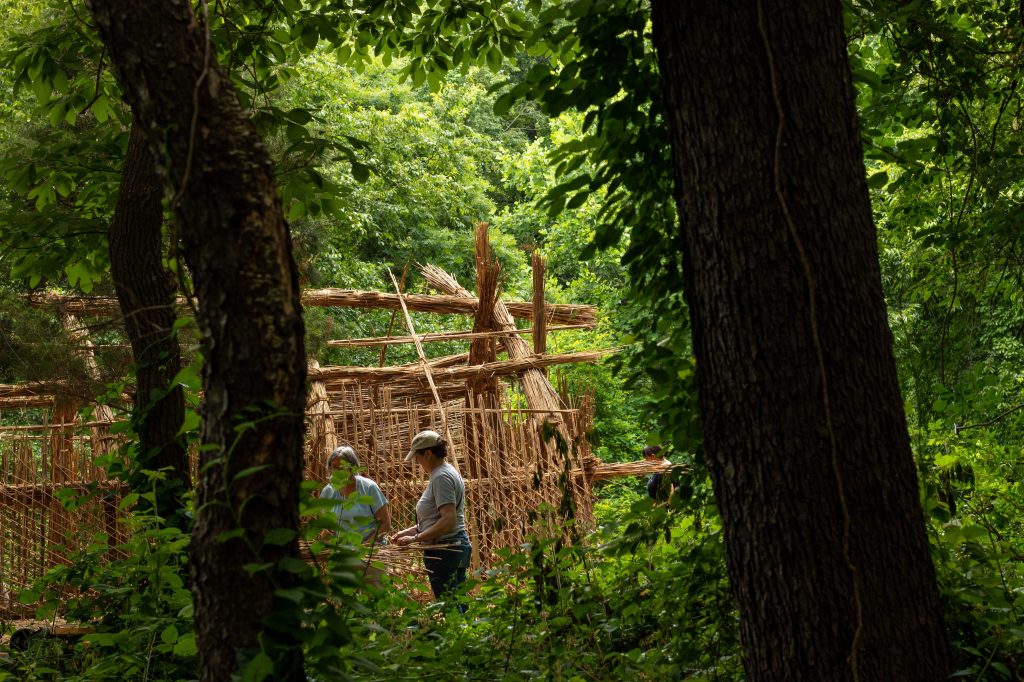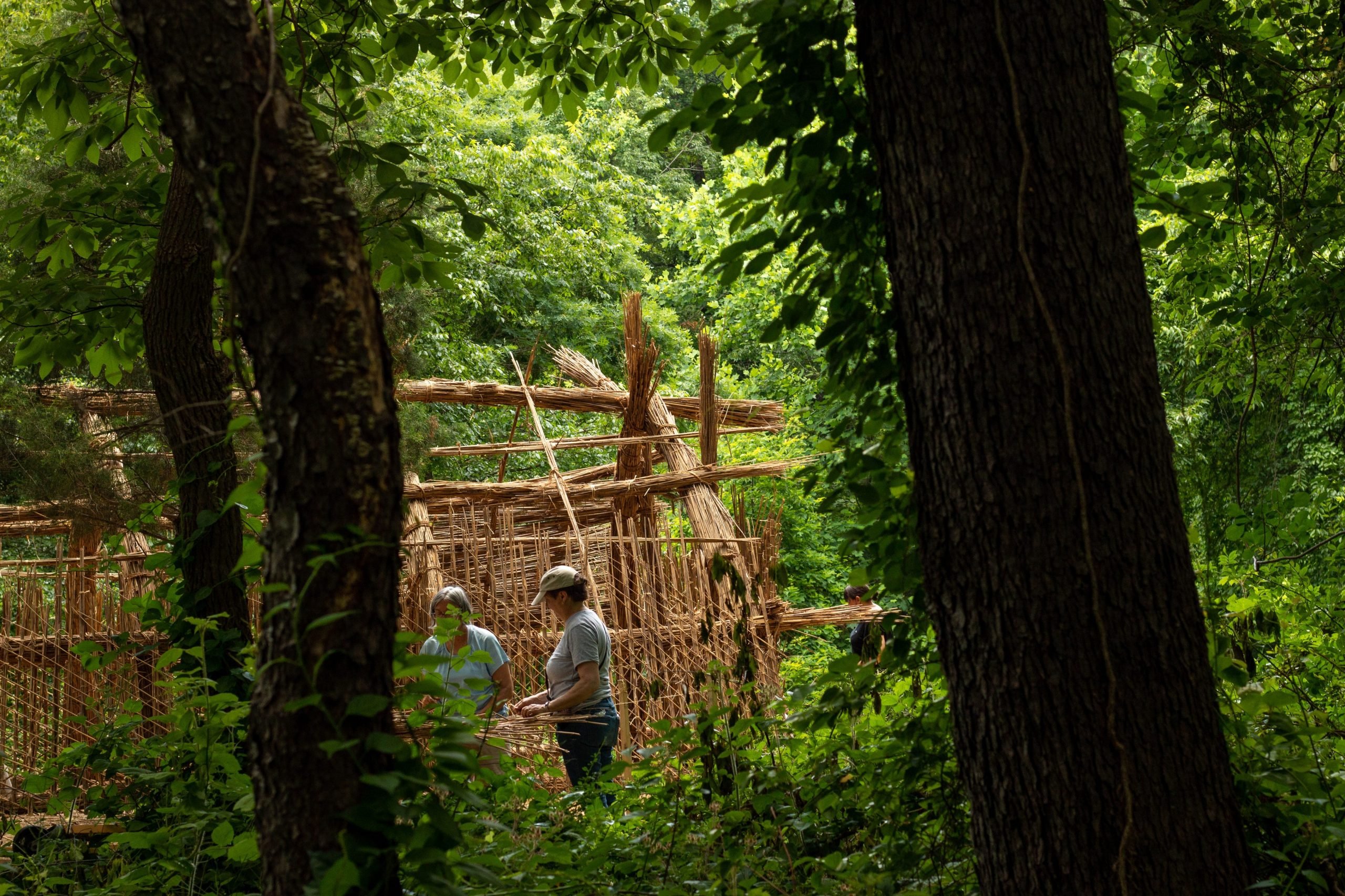
Charles Davis/Insider
- "Al-Mudhif – A Confluence," is an art project by Sarah Kavage and Yaroub Al-Obaidi.
- Artists and volunteers are constructing a traditional Iraqi building out of reeds, or phragmites.
- It is believed to be one of the first such buildings in North America.
- Visit Insider's homepage for more stories.
PHILADELPHIA – Twenty-odd minutes from the main road, past a baseball field and down a winding dirt trail, a team of volunteers is building a home out of reeds in a clearing surrounded by the lush spring foliage of ancestral Lenni-Lenape land. One of the first of its kind in America, it's a design that's been around for thousands of years in Mesopotamia. Here, it's made possible thanks to an invasive species, the initiative and know-how of a war refugee, and a chance meeting at a lecture on the eve of a pandemic.
"There's lots of lessons to be learned about how we value things, or don't, in our society: plants, people, and how we sort of demonize the 'invader," Sarah Kavage, a Seattle-based visual artist and urban planner, said on a Monday morning in June.
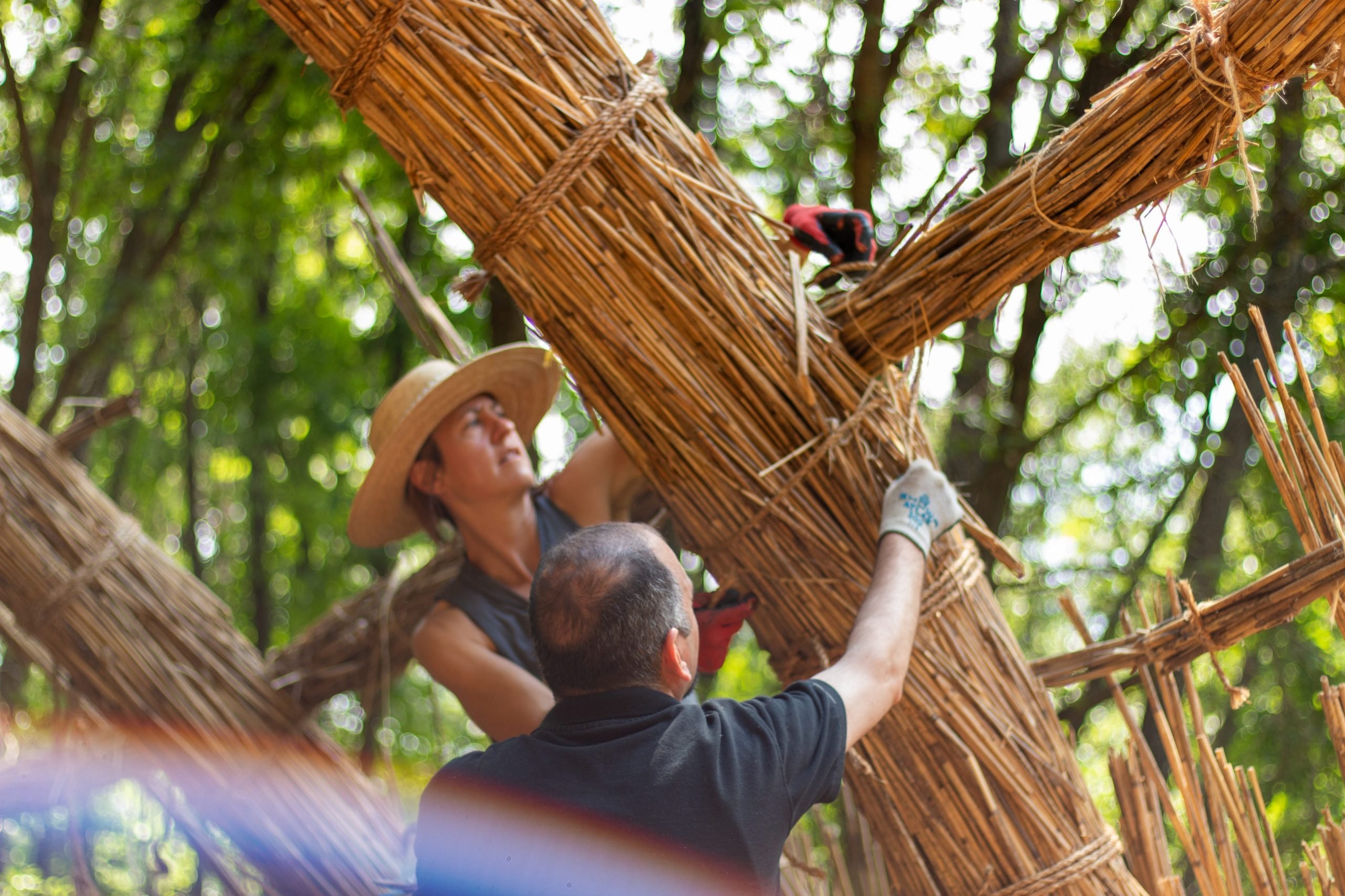
Charles Davis/Insider
Just before lockdowns became a part of life, Kavage was in Philadelphia to talk about nonnative phragmites, or reeds, which took root on the Eastern Seaboard sometime in the 19th century and have since spread across the continent. Kavage's work tries to get people to see and appreciate what is around them; it's meant to be interacted with and, like life itself, is "ephemeral," she said.
So what does that have to do with an invasive species?
"Most people in this area are like, 'This plant is annoying – it's terrible,'" Kavage said. But it's also not going anywhere. Therein lies the appeal: that it's a fact of life. And we must deal with those.
Kavage's lecture, hosted in January 2020 at the Moore College of Art & Design in Philadelphia, sought to cast the lowly reed in a new light. Where it came from, she noted, this terribly annoying plant had been put to a constructive use: providing shelter.
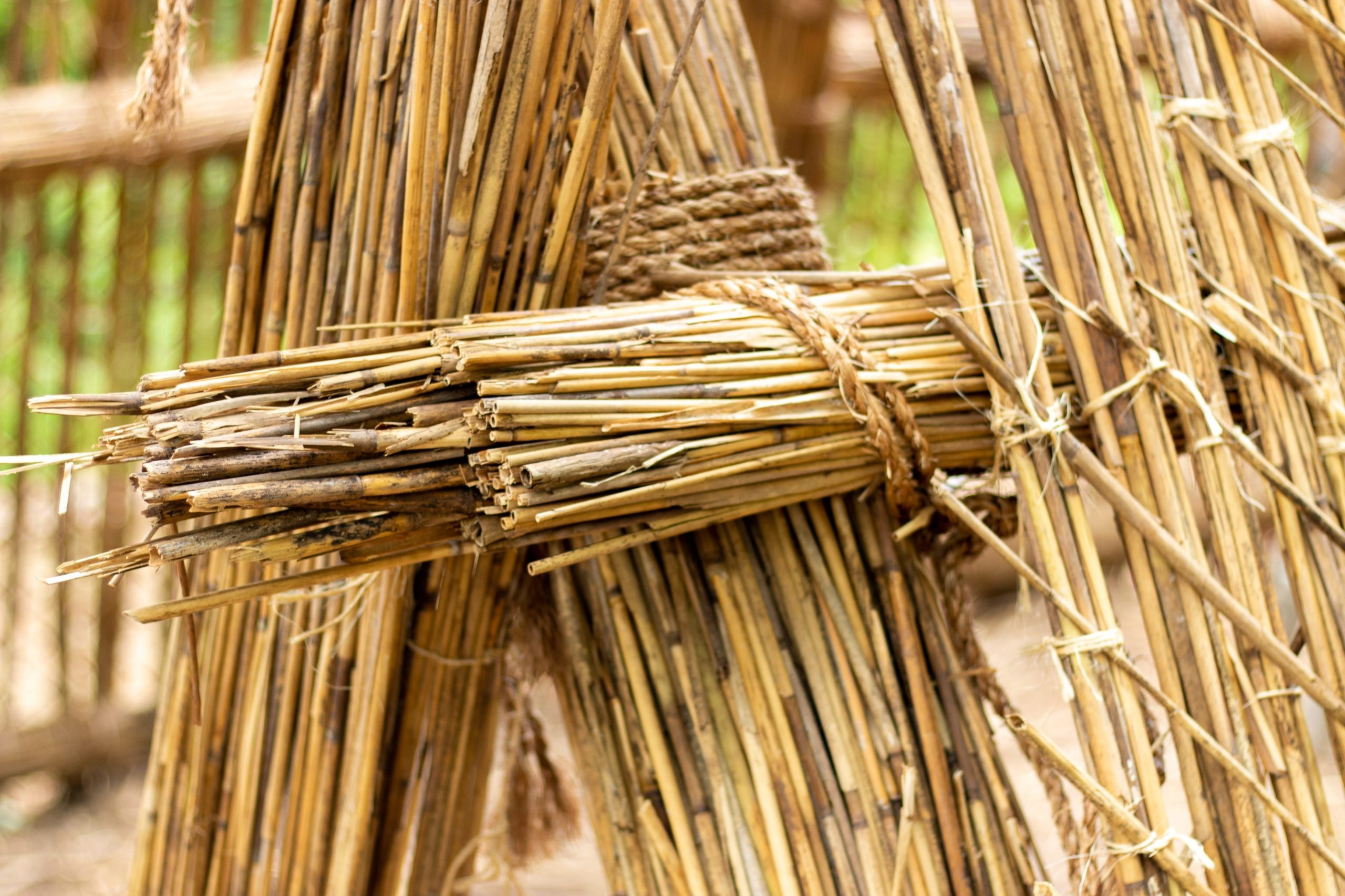
Charles Davis/Insider
During her research, Kavage had discovered the mudhif, a style of building popular in southern Iraq. While in Europe it was not uncommon to build a thatched roof out of reeds, the mudhif is built from the ground up with phragmites. "It was," Kavage recalled, "one of the most beautiful and just fascinating uses that I found."
But it wasn't a new discovery to all in attendance.
Yaroub Al-Obaidi, a former lecturer on industrial design at the University of Baghdad, had recently graduated from Moore College and had been intrigued by Kavage's presentation. Before coming to the US as a refugee in 2016, he had worked with reeds himself and seen firsthand the mudhifs common in his native country, where they were often used as a ceremonial space for community gatherings.
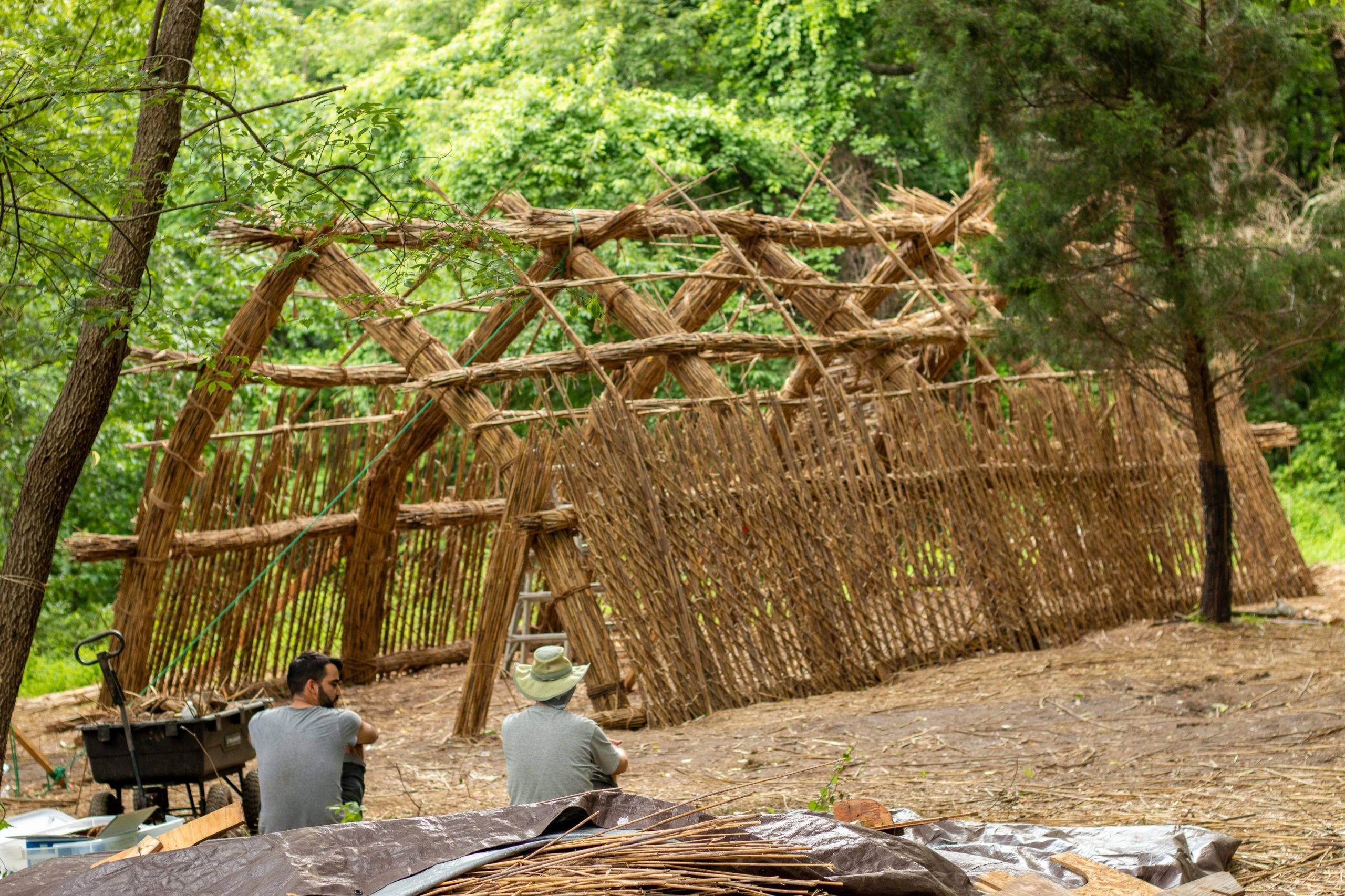
Charles Davis/Insider
Al-Obaidi approached Kavage after the lecture.
"I know what you were talking about with the mudhif," he told her. "And I think we are going to build one here.
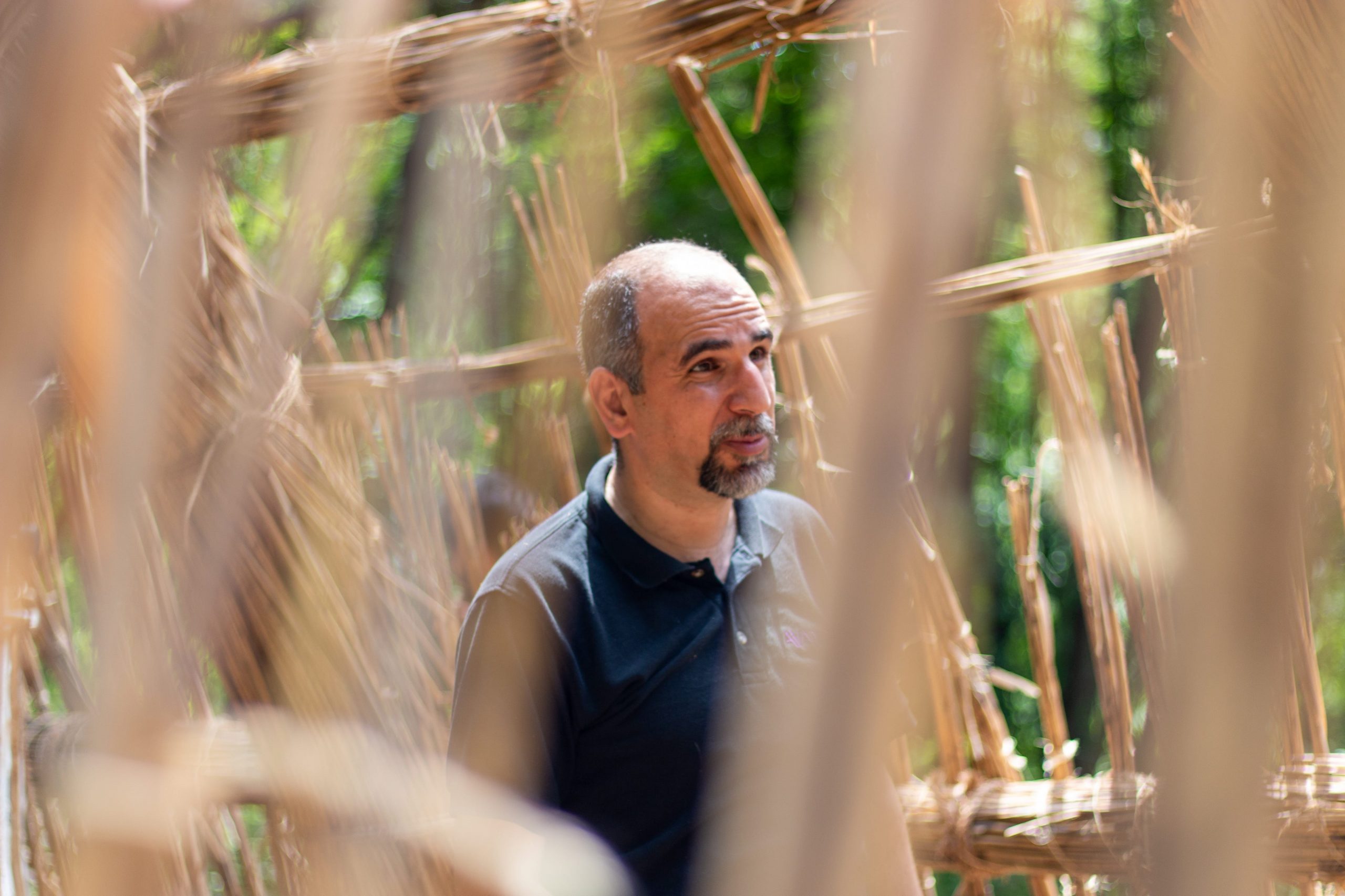
Charles Davis/Insider
There are not many people of Iraqi descent in the Philadelphia area, where Al-Obaidi was ultimately resettled after fleeing Iraq following the 2003 US invasion (after stops in Syria and Malaysia). Building a mudhif came to him as a way to bring part of Iraq here. He just didn't know, until he met Kavage, that he was surrounded by the raw material.
Their meeting that January led to the Al-Mudhif project. For the last couple weeks, Kavage, Al-Obaidi, and a group of volunteers have been constructing the traditional Iraqi building as part of an initiative, Lenapehoking ~ Watershed, hosted by the Schuylkill Center for Environmental Education and nearly two dozen other nonprofit nature preserves. The initiative is intended to honor the land's indigenous inhabitants, the name itself a nod to what the area was called before settlers dubbed it the "Delaware," and spark reflections on our interactions with this habitat.
Using material gathered by volunteers at the Schuylkill Center and from the nearby marshlands of the John Heinz National Wildlife Refuge - about 1,400 pounds of phragmites, total - the idea is to combine the cultural with the natural world in a way that creates a living, breathing space.
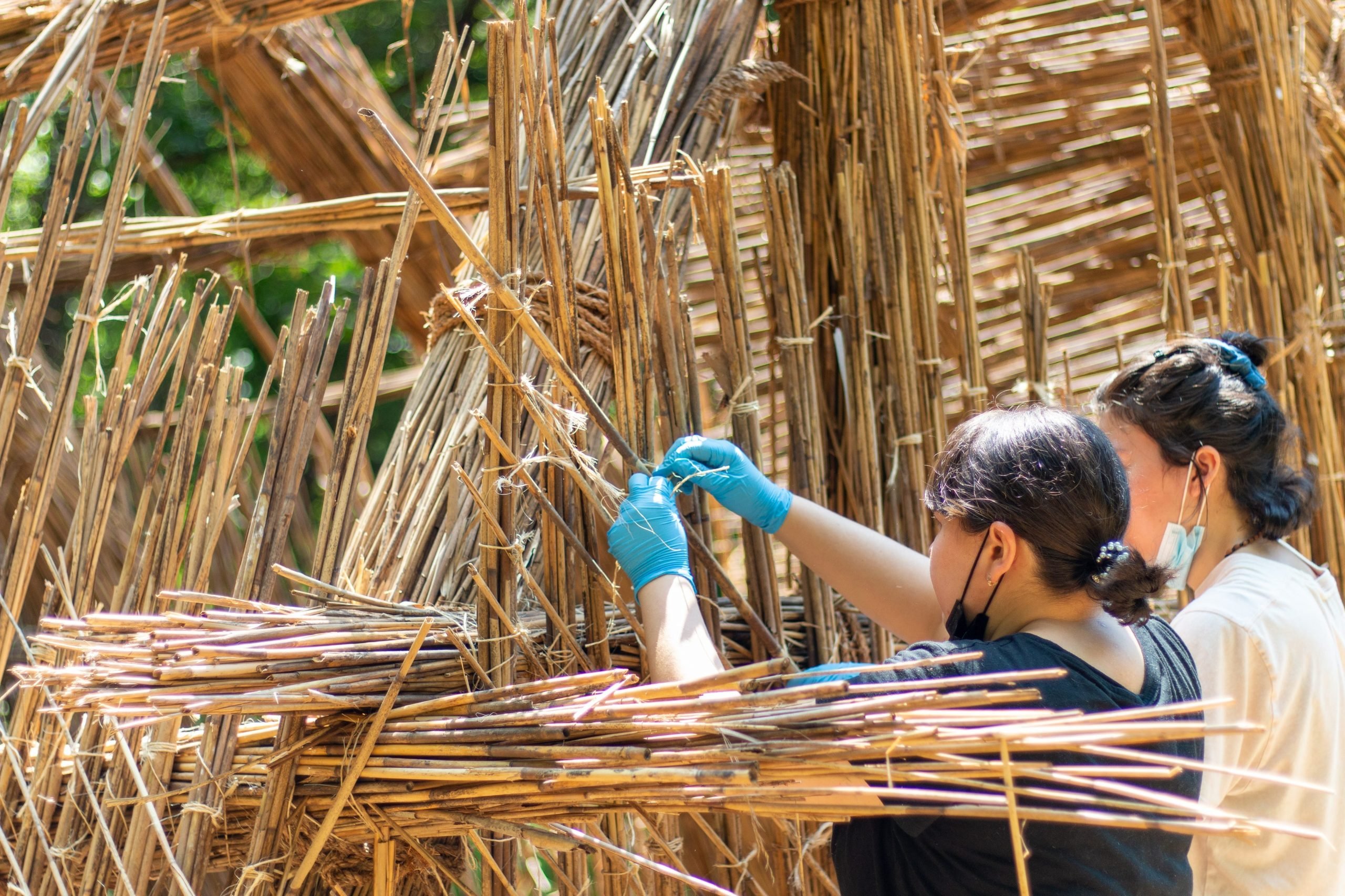
Charles Davis/Insider
"We wanted to do a project that can be a networking opportunity for the centers, with each other, but also with the surrounding communities and build more relationships and constituencies around them," Tina Plokarz, director of environmental art at the Schuylkill Center, explained.
Another mission, as Al-Obaidi tells it, is "to make this a space for everyone to heal."
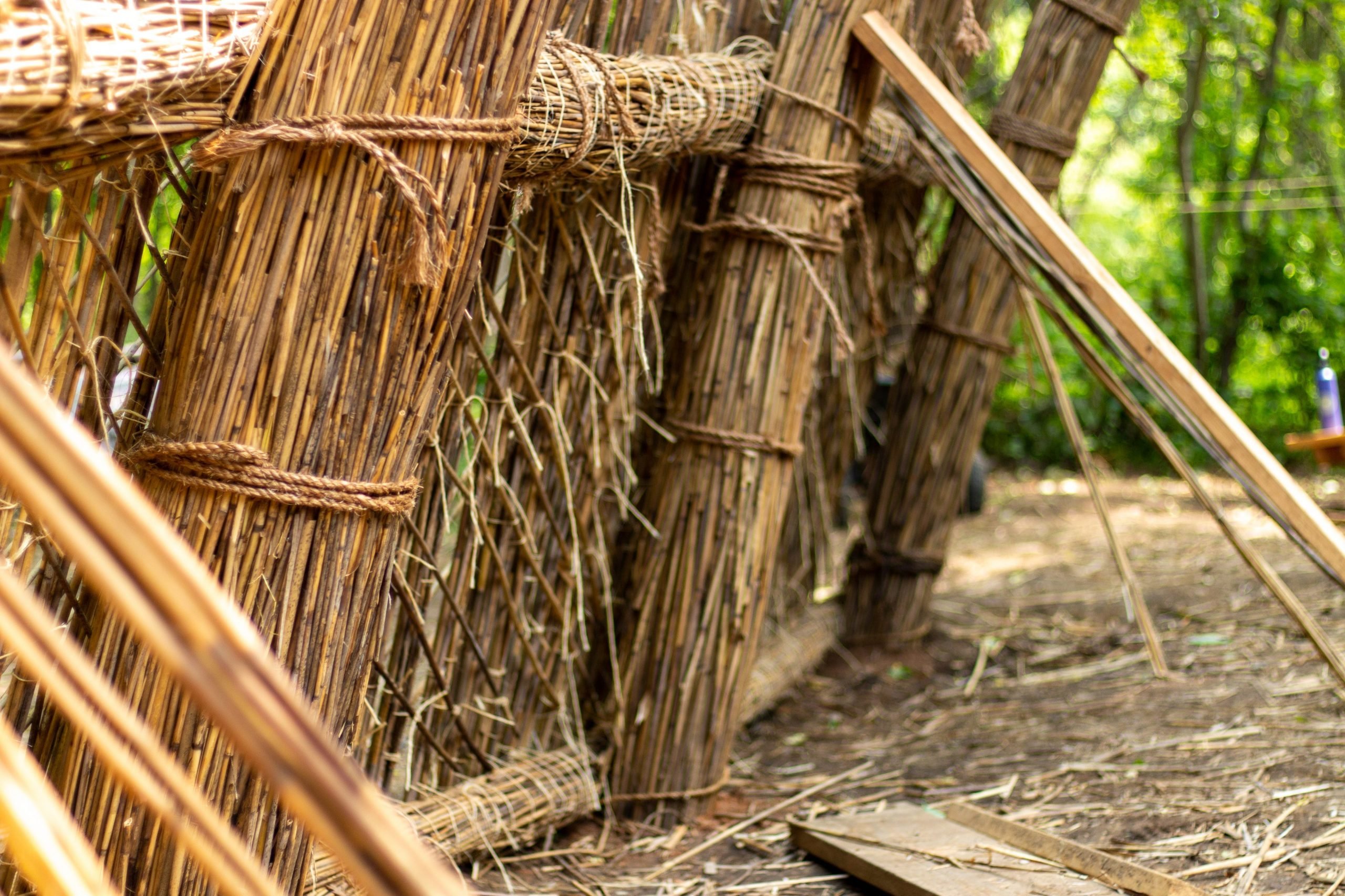
Charles Davis/Insider
In 2017, Al-Obaidi took part in a project sponsored by Mural Arts Philadelphia, Radio Silence, that brought together US veterans of the war in Iraq and local members of the Iraqi diaspora for a 90-minute performance on Independence Mall. Both groups were invited to share their experiences of the war, as well as the years before and since, to bridge the divide between groups that come to view the other with trepidation, if not hostility.
Al-Obaidi's hope is the completed structure can serve as a gathering place for Iraqis like him and Iraq war veterans alike - people like Lawrence Davidson, a soldier whose military base in Diyala, outside Baghdad, was just two miles from his family's residence. The two met during the 2017 project and are now good friends, having dinner at each other's homes.
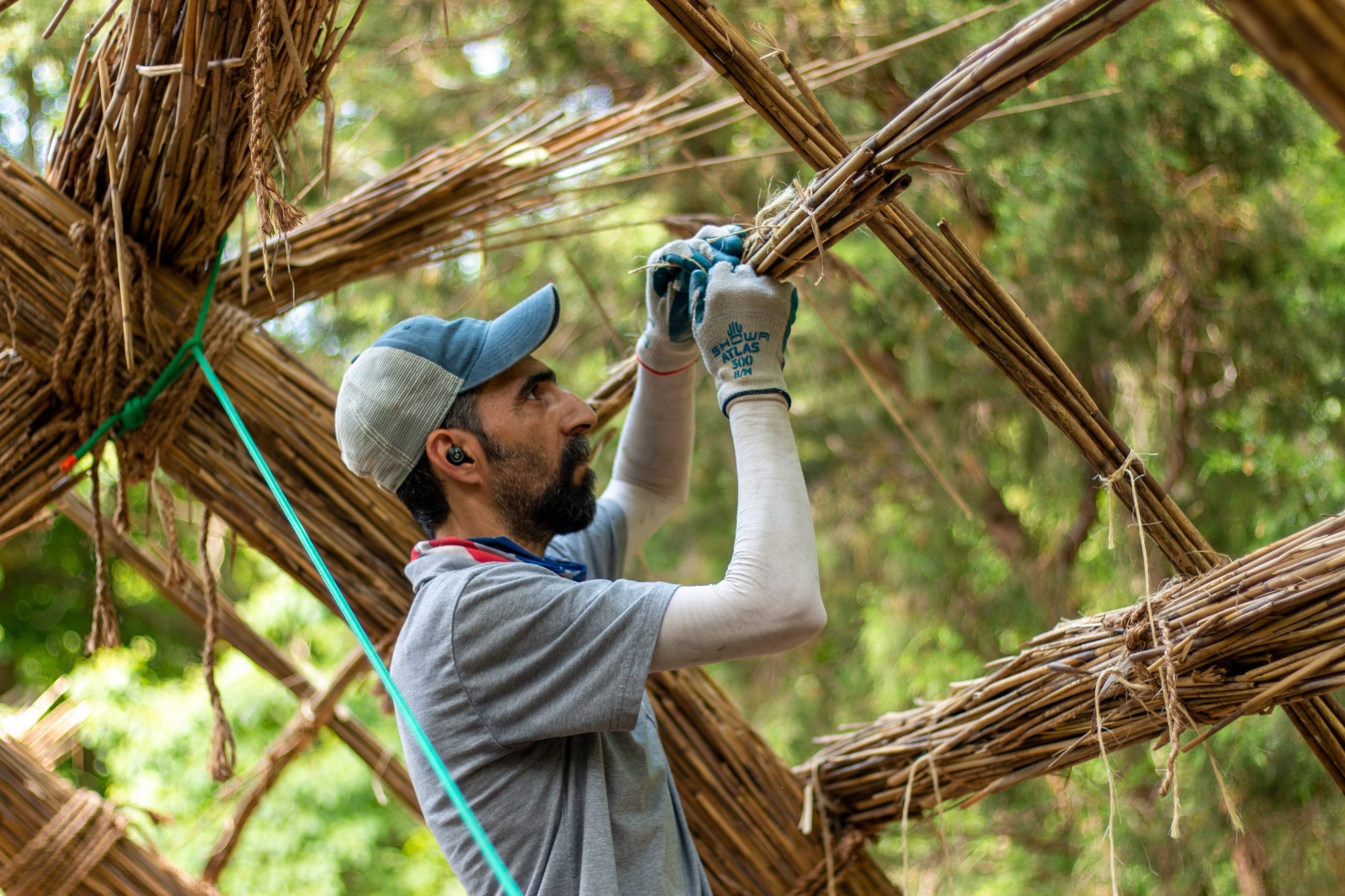
Charles Davis/Insider
Still, "We all need a space -- a symbolic space," he said. "I think meeting here will be much more exciting for us both. This is something from my country of origin, my tradition, and they feel this also related to them," he said. "This is the connection we'll start from."
The intent is not to forget, but to move on.
"We have memories, of course - some bad memories - but if we [are stuck] on those memories we cannot move," Al-Obaidi said. "We are all survivors. We survived the war, either Iraqis or the veterans. So to continue our life, we need to be open to each other, to create friendships."
Today, after all, "we are all in the same place, same city."
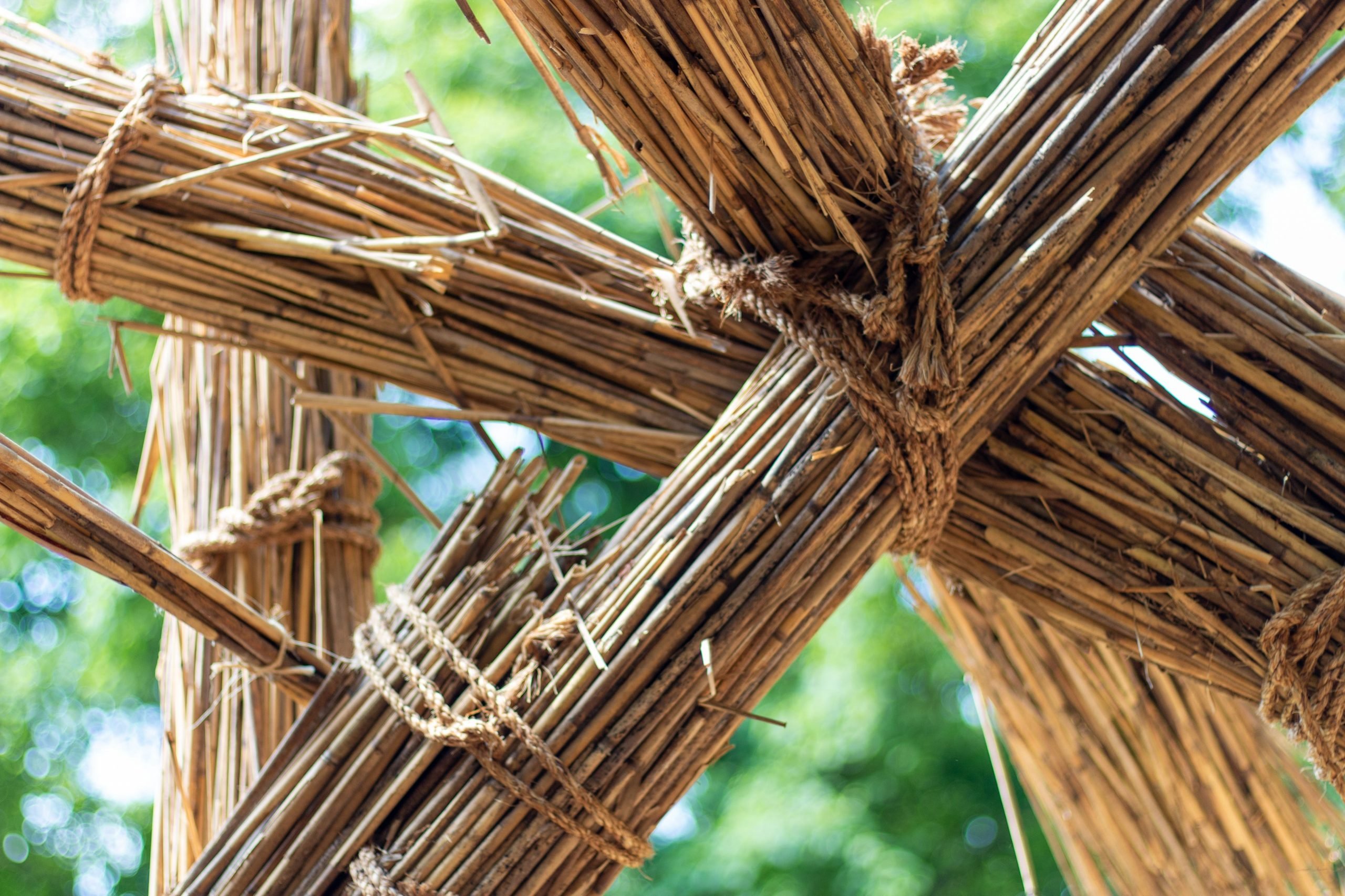
Charles Davis/Insider
A piece of Iraqi culture in Philadelphia also serves as a lesson and point of pride for the children of refugees. Al-Obaidi recalled one Iraqi family that volunteered to harvest reeds for Al-Mudhif and came back to help assemble it. "And [the father] said to me yesterday, 'Do you know that my kids are still talking about that Monday?' It's very nice for them to see their culture here."
Others who have come to volunteer have no connection to Iraq. That's also the point: to be a unique intersection for people of various backgrounds with varying interests.
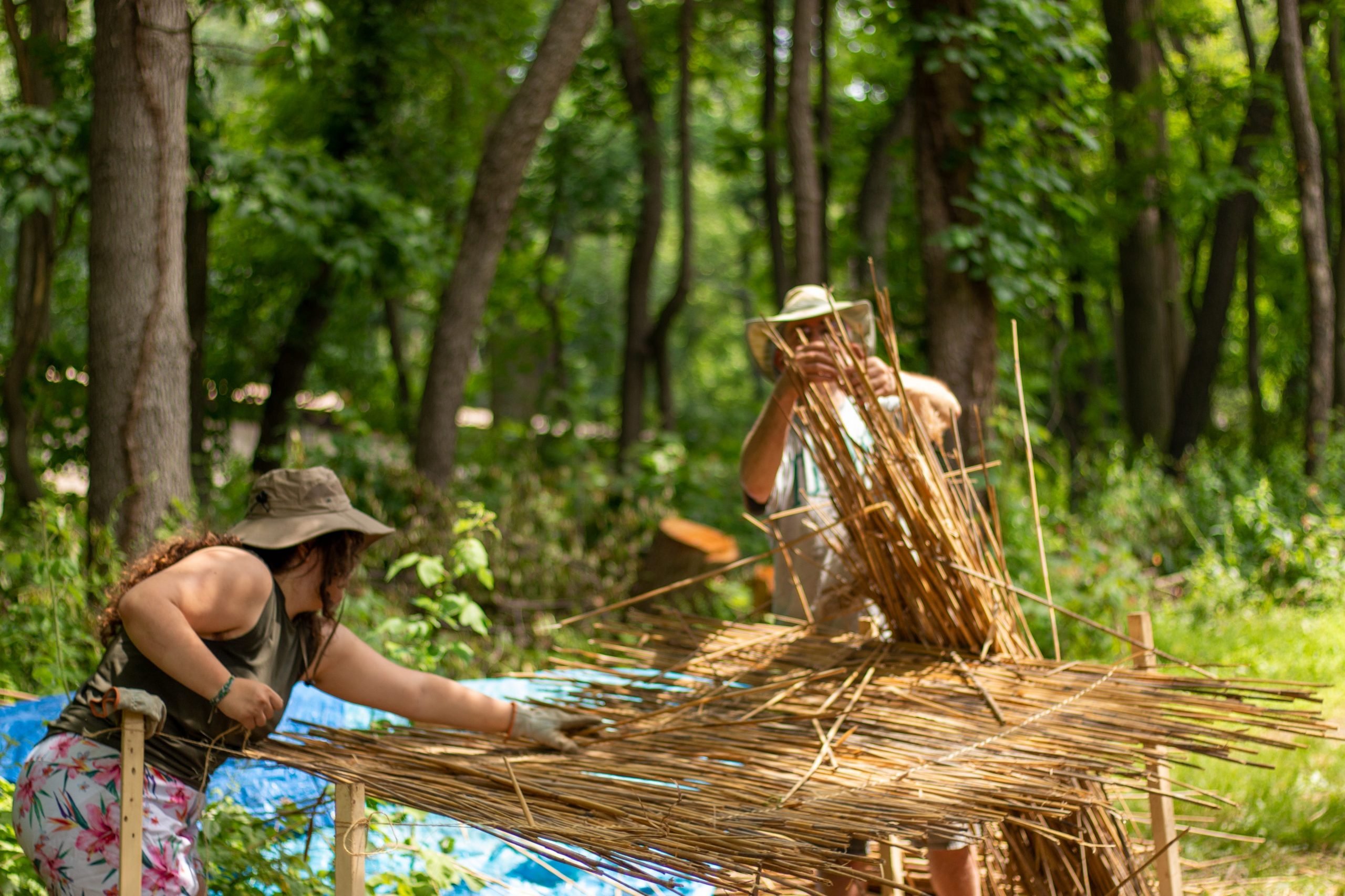
Charles Davis/Insider
Mia Hoppel, 17, is a homeschooler who lives nearby. She helped dig the holes for the base of the building and, on this stiflingly hot Monday, was weaving together the reeds that will be used for the roof.
"They said that it was one of the first ones of these houses in the country, and it seemed like a really neat opportunity to work on it," Hoppel said. As a lover of nature, she was also intrigued by the idea of employing a foreign species that is often viewed as an enemy of local wildlife.
"It's important to sort of find ways to use invasive plants," she said. "They are kind of everywhere."
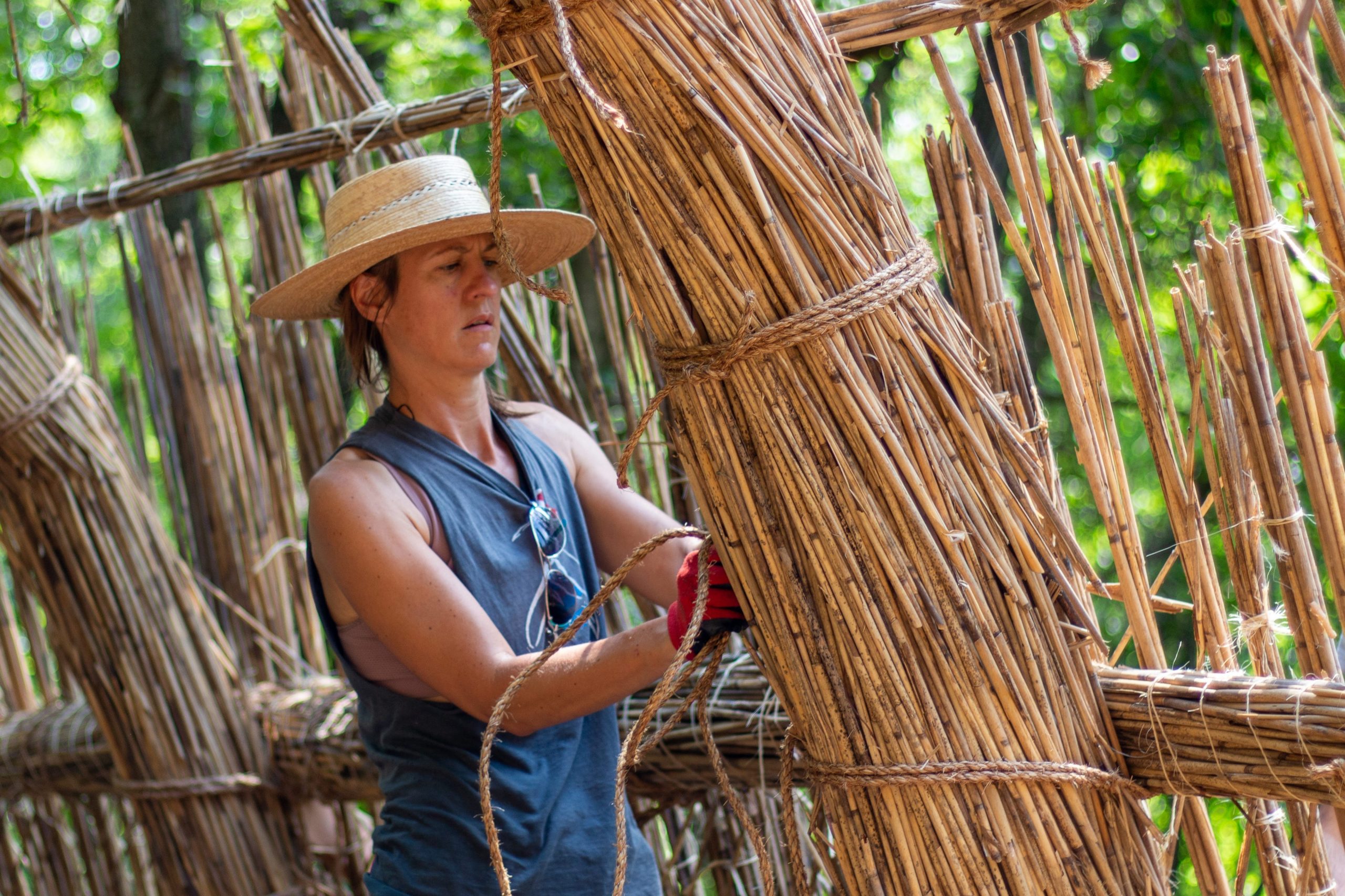
Charles Davis/Insider
Already, then, Al-Mudhif is achieving one of its creators' goals - and that, before it has opened. Later this month, there will be a ceremony with food and drink. The hope is that, for the next three to five years (or however long it can last in the harsh and wet Mid-Atlantic), the building will continue to be a gathering place.
Kavage hopes it also serves as inspiration.
"In the art world, there's a certain sort of cultural language that environmental art seems to take - it takes the form of guilt," she said. "It feels really important to shift into the language of just sort of experience: of doing and making, being together, sharing space together. It has a joy to it that's really special."
Have a news tip? Email this reporter: [email protected]

